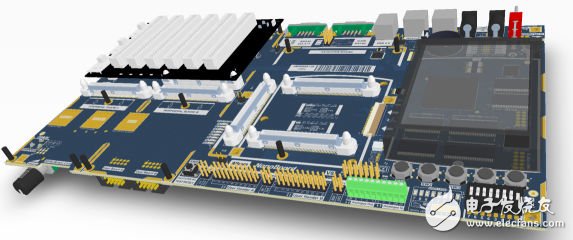Designing and building the next generation of electronics is a complex process, especially in the globally highly competitive industry of electronics, where rapid and continuous technological change has become a common and innovative rule. If the designer can't accept these changes, he will be at risk of being left behind by competitors, or even completely unable to join the competition. This is especially true for printed circuit board (PCB) designs. In this market, consumers are more eager to get smaller, cheaper, faster and more functional electronic products, coupled with a shortened design cycle and geographically dispersed design teams, are pushing design The complexity and push the use of traditional design tools to their limits. Increased network counts, tighter design constraints and routing densities, and gradual migration to high-speed, high-density projects further exacerbate PCB complexity. This trend is affecting all areas of the industry, not just high-end consumer electronics.
Fortunately, PCB design tools have steadily grown in recent years to address the challenges of this increasingly complex design landscape. A major change – the adoption of 3D capabilities, is expected to allow designers to balance design innovation with the competitiveness of the global marketplace.
Design challenges in the 3D world
Traditionally, board designers have relied on design prototypes to ensure the shape, fit, and functionality of the design before manufacturing. Although feasible, this approach has a number of disadvantages. First, the designer cannot determine if the board is suitable before making the actual prototype. Second, this approach generally results in multiple prototypes being created during the design process. Again, multiple prototypes are very time consuming and the average cost for a moderately complex design prototype is $8,929. Any extra time or cost increase in the design process will not only affect the competitiveness of a company, but also hinder our march into new business. It is not difficult to understand why this method is not welcome.
Another drawback is that PCB design has traditionally been a two-dimensional design. Basically, the design is created in 2D, hand-labeled and passed to the mechanical design engineer. Mechanical engineers use mechanical CAD software to redraw the design in 3D. This method is very time consuming and error prone because it is completely manual. Therefore, it cannot provide competitive differentiation for designing next-generation electronic products. Now the problem is clear, board designers need to find better ways to view and analyze their increasingly complex designs.
The ultimate goal of PCB designers is to create products for the real world (with three dimensions), so the best solution is to use a design tool with advanced 3D capabilities. It allows designers to view realistic 3D images before production, eliminating the need to make prototypes, saving time and money (Figure 1). Accurate 3D models can be easily generated and then used for board layout in real 3D. In addition, the 3D model of the target housing can be imported into the PCB design to ensure that the designed board is placed perfectly into the housing. Finally, designers can submit their design files with confidence in production.

Figure 1. By visualizing the 3D visualization of the design, the designer can examine all aspects of the interior and exterior of a design in 3D.
The 3D export capability provides designers with the ability to perform further analysis in other analysis tools, such as thermal analysis and electromagnetic simulation analysis. For today's compact, battery-powered devices that use wireless connectivity, the cooling effect is completely dependent on the board shape, which is critical. Because of these features, 3D capabilities in PCB design tools are absolutely essential for designing next-generation electronics quickly, accurately, and at low cost.
China Restaurant Pos Software ,All In One Pos Systems , Smart Pos Machine Manufacturer
THE Restaurant Pos System DESIGNED TO HELP YOU GROW
Gmaii Food Beverage Pos System`s tablet point of sale system speeds up, simplifies, and automates restaurant operations so you can focus on what`s important.
Gmaii Food Beverage Pos System Register at Press Street
Gmaii Food Beverage Pos System`s Restaurant Pos System at Your Service.
Everything about Gmaii Food Beverage Pos System`s system is designed to help you turn, burn, and earn more efficiently than ever before.
Front and Back of House
Tableside Ordering
Mobile Business Insights
Staff Management
Reporting and Analytics
Customer Support
Customer Loyalty
Customizable Hardware
Integrated payment processing
Online Ordering
Integrated Accounting
Multi-Location Management
Food Beverage Pos System
Restaurant Pos Software ,All In One Pos Systems ,Smart Pos Machine ,Best Pos System For Restaurant
Shenzhen Gmaii Technology Limited , https://www.gmaiipos.com